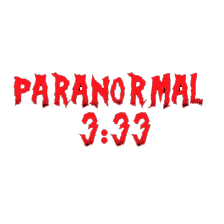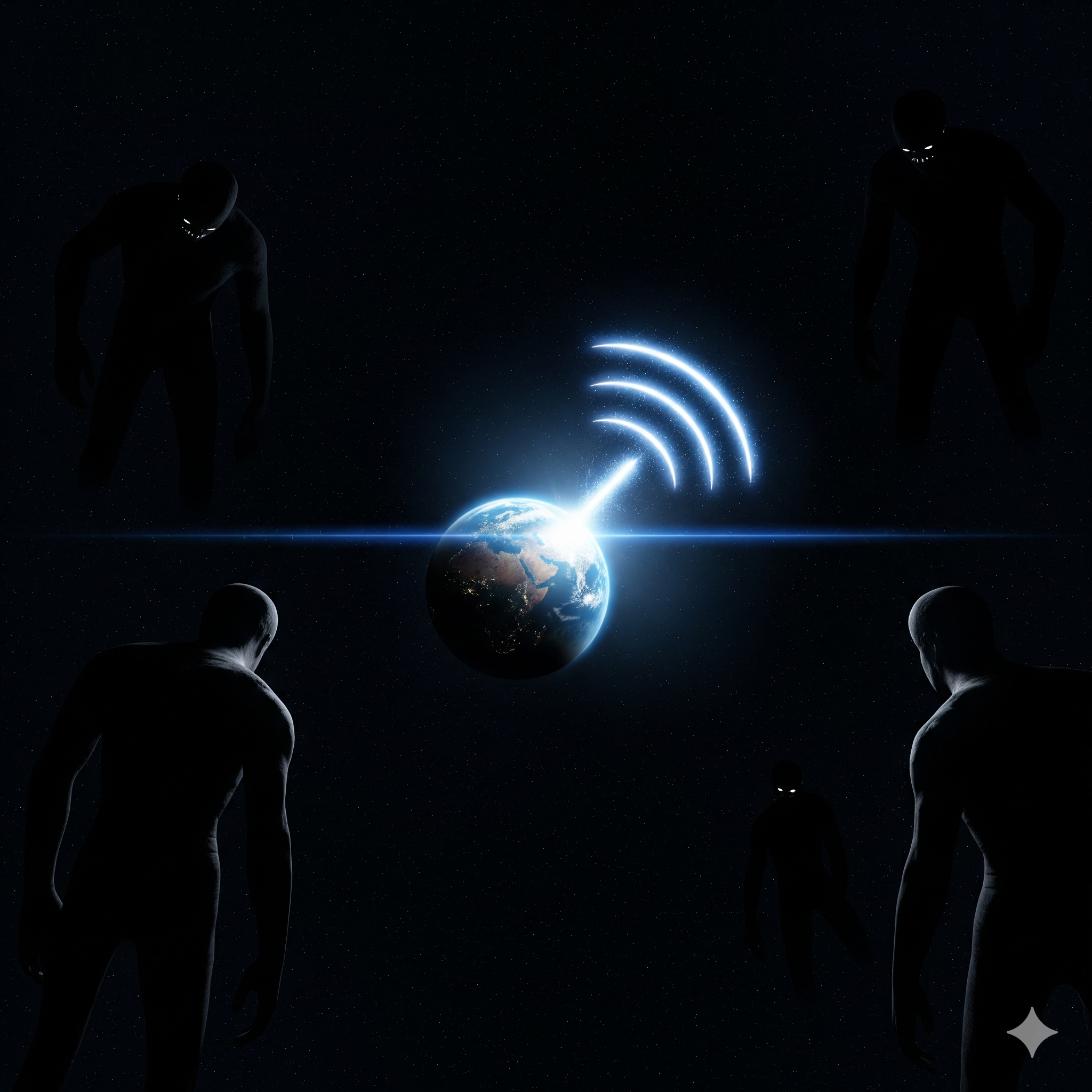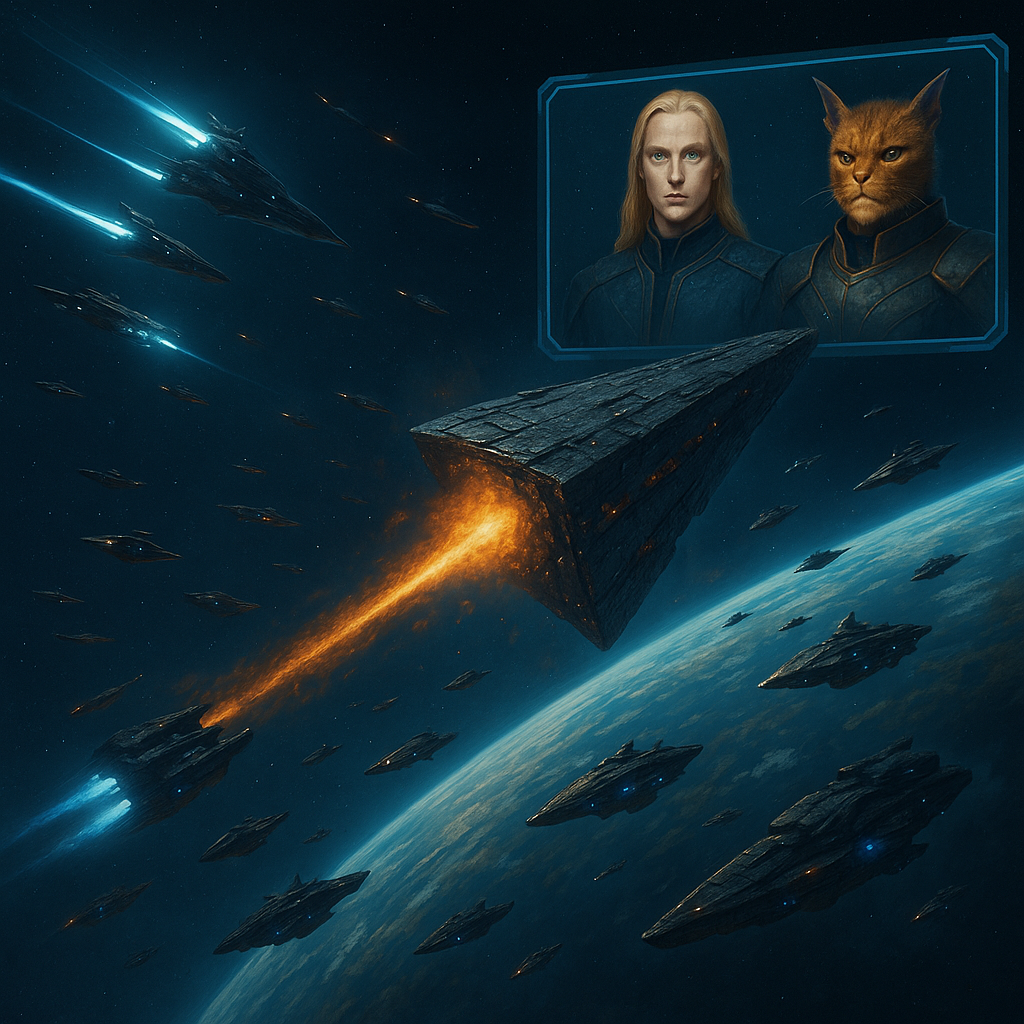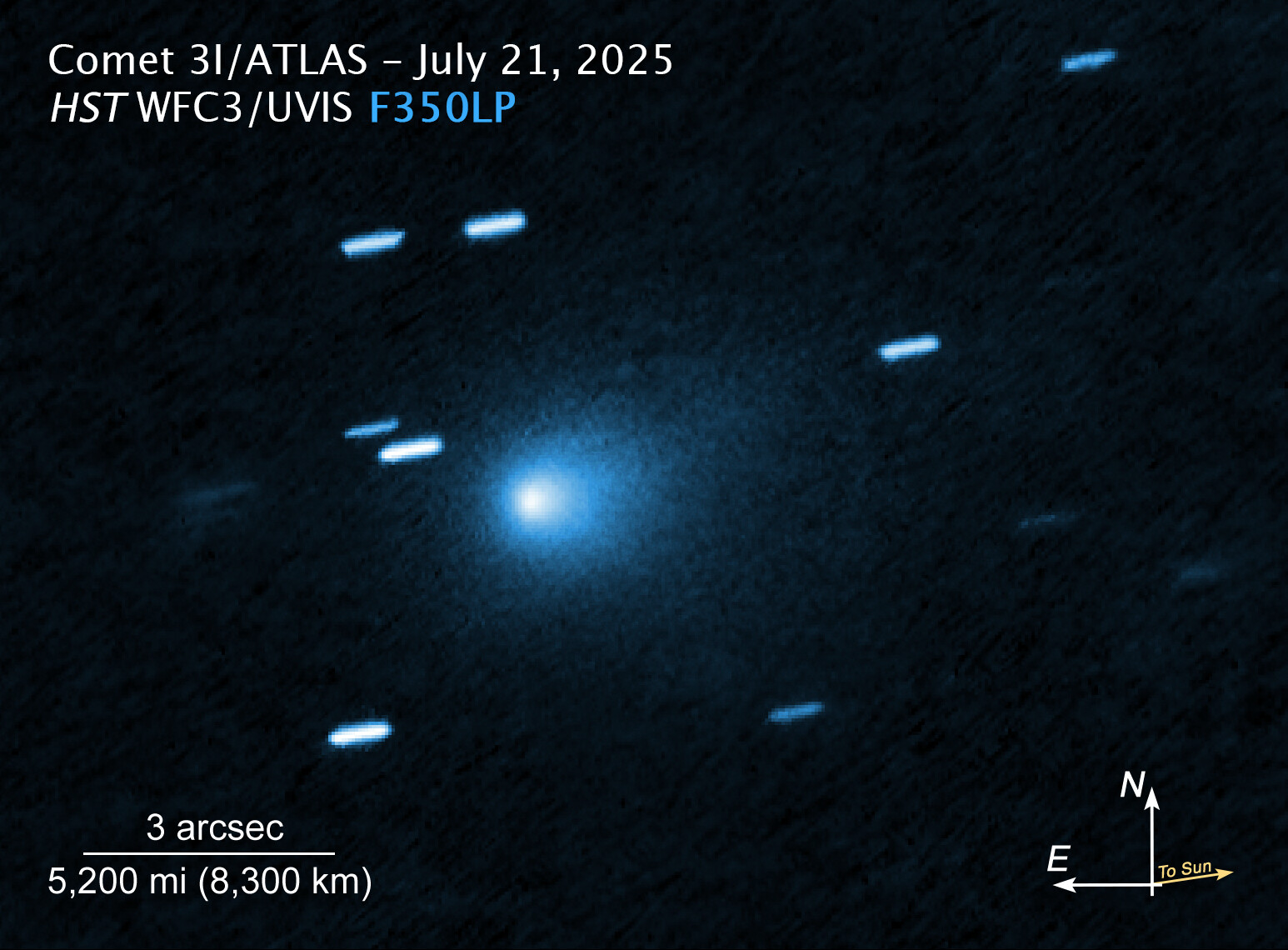Introduction: Lost in the Cosmic Forest
Imagine the following situation for a moment. You are lost. It is nighttime, a moonless, pitch-black night, and you are in the middle of an immense, unknown forest. The only sound is that of your own short breaths and your heartbeat pounding in your ears. A primal urge screams at you to call for help, to build a fire, to announce your presence in the hope that a rescuer might find you.
But another instinct, much older and more powerful, stops you.
You do not know the rules of this place. You do not know what creatures lurk among the trees, what predators have made this darkness their hunting ground. Your reptilian brain, the echo of millions of years of evolution, whispers a single command: hide. Find shelter, sharpen your hearing, and above all, remain absolutely silent. In an environment of unknown threat, silence is not emptiness; it is a shield. Every branch that cracks under your feet is not a step, but a betrayal of your own survival.
Now, imagine that this forest is the universe. And every civilization, including our own, is that solitary traveler, lost in the vastness of the cosmic night.
This simple, visceral idea could be the key to solving one of the most profound questions humanity has ever asked: if the universe is so vast, why does it seem so terrifyingly silent and empty?
To navigate this darkness, we will be guided by three beacons, three monumental ideas that form what we will call the Cosmic Triangle. Each is a piece of the puzzle that, when joined, could forever change our perception of the cosmos and our place in it. These are the stops on our journey:
- The Unsettling Question (The Fermi Paradox): The fundamental contradiction that gives rise to it all. Why, with billions of planets out there, do we see no one?
- The Scale of Power (The Kardashev Scale): A way to measure the possible inhabitants of this forest. How powerful might the other travelers or the hidden predators be?
- The Rules of Survival (The Dark Forest Theory, popularized by Liu Cixin): The most chilling hypothesis of all, which proposes a direct answer to Fermi’s question. Why does everyone choose to hide?
Throughout this analysis, we will connect the dots between these three pieces. We will discover how they intertwine to paint a picture of the universe that is far more complex, fascinating, and perhaps, far more dangerous than we have ever imagined.
Prepare to enter the forest. But be warned: once you understand its rules, you may never look at the starry sky the same way again.
Chapter 1: The Fermi Paradox – The Echo of an Empty Stadium
“Where is everybody?”
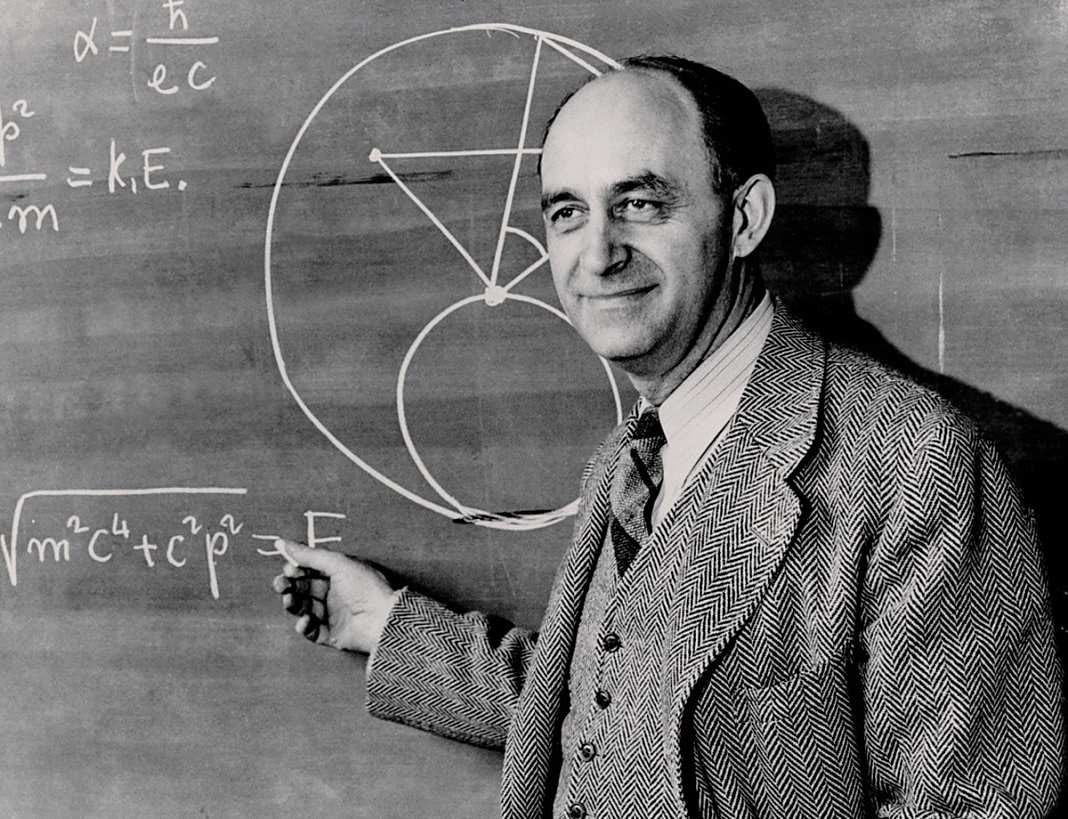
Before we venture deeper into the darkness of the forest, we must understand the nature of the silence that surrounds us. A silence that, at first glance, makes no sense at all.
Think about it for a moment. Our galaxy, the Milky Way, is an inconceivably vast place. It contains between 200 and 400 billion stars. Modern science tells us that most of those stars have planets orbiting them. We’re talking about trillions of planets in our galactic neighborhood alone. If even a minuscule fraction of those worlds had the conditions for life, and an even smaller fraction of those developed intelligent life, and only a handful of those created a technological civilization… the numbers would still be overwhelming.
Pure logic and statistics tell us that the night sky should be a hotbed of signals, an interstellar communications highway. We should be stumbling upon the radio emissions of distant civilizations, detecting their megastructures, or at least seeing the evidence of their passage.
This contradiction was brilliantly and casually summarized during a lunch in 1950 by the Nobel Prize-winning physicist Enrico Fermi. While discussing the high probability of extraterrestrial life with his colleagues, he asked a question as simple as it was devastating, a question that has echoed through the halls of science for decades: “But where is everybody?”
That is the Fermi Paradox. The absolute contradiction between the high probability that cosmic neighbors exist and the total lack of evidence for their existence.
To feel the true weight of this paradox, let’s use an analogy. Imagine you’ve been given a ticket to the world championship final. You arrive at a colossal stadium with a capacity for millions of spectators. You expect a deafening roar, chants, lights, an explosion of collective energy. But when you enter, what you find is absolute silence. All the lights are on, the seats are there, the field is in perfect condition, but there isn’t a single soul. There is no sound.
Your first reaction wouldn’t be to think the stadium is empty. Your first reaction would be a chill down your spine. The question wouldn’t be, “Am I in the right place?” The much more unsettling question would be, “What catastrophe has occurred here to cause this silence?” The absence of noise, where there should be a roar, is the most alarming signal of all.
That stadium is our galaxy. And that sepulchral silence is what our radio telescopes hear every night.
Modern science, with telescopes like the James Webb, confirms every day that the “seats” exist. There are rocky planets in habitable zones everywhere; the potential “homes” are countless.
Therefore, the mystery of the Fermi Paradox is not the lack of cosmic real estate. The true and profound mystery is the inexplicable absence of “neighbors.” This silence is the blank canvas upon which the most fascinating and terrifying theories are painted. And the first brushstroke forces us to consider that perhaps, silence is not an absence, but a choice.
Chapter 2: The Kardashev Scale – Measuring the Titans of the Cosmos
“Not all inhabitants of the forest are equal.”
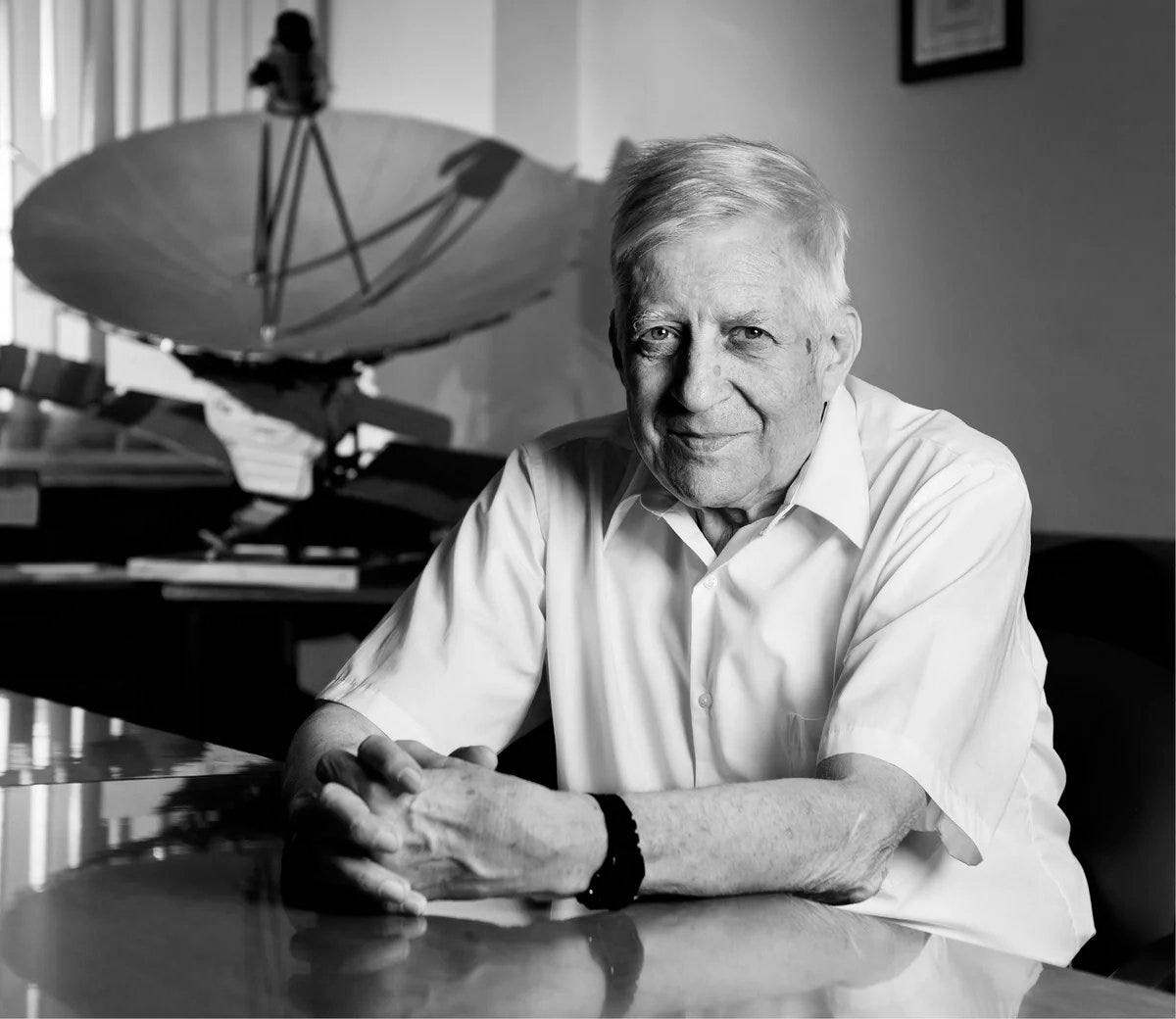
If the silence of the cosmos is a choice, as we suggested at the end of the last chapter, the next question is inevitable: who are the ones choosing to be quiet? To understand the behavior of the inhabitants of the cosmic forest, we must first accept a fundamental idea: not all are equal. There are ants, there are wolves, and perhaps, there are entities so vast that for them, the entire forest is simply their garden.
In 1964, the Soviet astrophysicist Nikolai Kardashev proposed a way to classify these possible civilizations. He realized that trying to guess their biology, politics, or philosophy was impossible. Instead, he focused on the one metric that is universal and quantifiable: energy. The Kardashev Scale does not measure how wise or ethical they are, but how powerful they are, based on the amount of energy they can consume and control.
This scale provides us with a ladder of power to understand the potential hierarchy of our universe.
- Type I (Planetary Civilization): This is the first major step. A Type I civilization is the apex predator of its world. It has transcended the limitations of local energy sources and achieved total mastery of its planet. Imagine a civilization that does not fear hurricanes because it diverts them at will. That extracts energy directly from its planet’s molten core or has covered its deserts with perfectly efficient solar grids. It controls its climate, its oceans, and its geology. It has domesticated its home.
- Type II (Stellar Civilization): A mythological force. Over time, even the energy of an entire planet falls short. A Type II civilization takes the next logical step: harnessing the total energy of its host star. It would not settle for the sunbeams that reach its planet; it would build a megastructure, like the famous Dyson Sphere, to encapsulate its star and absorb 100% of its colossal energy output. For a civilization like ours, its capabilities would be indistinguishable from magic.
- Type III (Galactic Civilization): Here we enter a territory that defies imagination. A Type III civilization is not simply an inhabitant of the forest; IT IS the forest. It has learned to consume and control the energy of its entire galaxy. It feeds on the light of billions of stars, manipulates the energy of supermassive black holes, and travels between solar systems as we cross the street. Its thoughts could span millennia, and its actions could shape the spiral arms of the galaxy. To us, they would not simply be “aliens.” They would be, for all practical purposes, gods.
So, after describing these cosmic titans, where do we, humanity, fit in? The answer is as humbling as it is revealing. We are not even on the scale. We are a Type 0 civilization.
To be more precise, the famous physicist Michio Kaku calculates us as a Type 0.7 civilization. We still get most of our energy from burning dead plants (fossil fuels), an incredibly primitive technique. We have barely set foot on the first rung of a ladder that disappears into the clouds.
Now that we understand this scale of power, the silence Fermi spoke of takes on a new, much more sinister dimension. If we, the “babies” of Type 0.7, make so much noise with our radios and televisions, why are the giants silent? What could possibly scare a wolf (Type I) or even a dragon (Type II)?
The answer is simple and terrifying: the existence of an even greater hunter. Or, perhaps, the certainty that in this forest, every hunter is also prey.
Chapter 3: The Dark Forest Theory – The Rules of Silence
“The terrifying answer: why the one who speaks first, dies first.”
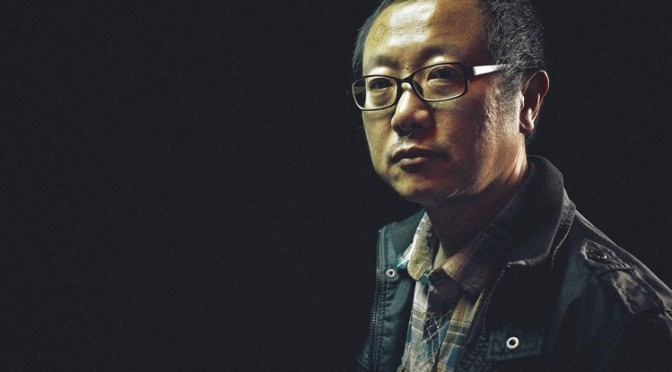
We have already established the bewildering scale of power that could exist in the cosmos. We saw the titans of the Kardashev Scale and wondered what could possibly frighten a “wolf” (Type I) or even a “dragon” (Type II). The answer is as simple as it is terrifying: the existence of an even greater hunter, or the certainty that in this forest, every hunter is also prey.
This idea is the core of the Dark Forest Hypothesis, popularized by the science fiction writer Liu Cixin. Although it comes from fiction, its logic is so relentless that many scientists and thinkers consider it one of the most plausible and chilling solutions to the Fermi Paradox.
The theory is based on a handful of universal truths, axioms as cold and hard as space itself.
The Axioms of Fear
- Survival is the Only Goal: Above morality, art, science, or philosophy, the primary and non-negotiable drive of any civilization is to continue existing. It is the only common ground we can safely assume we share with any other intelligent life form.
- Mutual Distrust is Inevitable: Imagine you detect a signal from a planet 500 light-years away. You send a reply. By the time your message arrives, 500 years have passed. If they respond immediately, another 500 years will pass before you receive their answer. In that 1,000-year round trip, your civilization and theirs could have changed completely. It is impossible to establish trust in real time. Due to the enormous distances, every other civilization is an unpredictable black box. A friendly greeting could be a lie. A peace treaty could be a trap. You cannot trust them.
- The Latent Threat of Technology: A civilization that seems primitive and poses no threat today could discover a new law of physics tomorrow. In a few centuries—a blink of an eye in cosmic time—they could surpass you technologically and become an existential threat. Therefore, every civilization, no matter how harmless it seems now, is a potential threat.
The Inevitable Strategy
If you put these three axioms together, the conclusion is as logical as it is gruesome. If your goal is to survive, you can’t trust anyone, and everyone is a potential threat, what is the only safe strategy?
The answer is brutal: the only winning move is not to play. Remain invisible. Turn off all your lights, silence all your radios, and pray that no one sees you.
And if, by bad luck, you detect the light of another campfire in the darkness of the forest, paranoid logic dictates a second step: eliminate it before it sees you. This is not an act of innate evil, but the coldest possible risk calculation. If that other civilization detects you, you cannot know its intentions. They might be peaceful, or they might decide to eliminate you using the same logic you are. It’s a prisoner’s dilemma on a cosmic scale, and the safest option is always to betray first.
Contact, in the Dark Forest, is not a greeting. It is a death sentence for one of the two.
To better understand this, let’s use a modern analogy. The universe is like an infinite social network where all profiles are anonymous, there are no administrators, and the rules are dictated by the most powerful users. Turning on your camera and microphone to say “hello” doesn’t guarantee you’ll find a friend. The only thing it guarantees is that all other users will instantly know where you are, who you are, and how vulnerable you are. Maybe you’ll find someone friendly. Or maybe, you’ve just given your address to all the predators who were listening in silence.
The Dark Forest, then, gives us the rules of the game. Terrifying rules for a game we are already participating in, whether we know it or not. The question that remains is, how do these rules fit with the players we have already measured and the silence we have already observed?
Chapter 4: The Cosmic Triangle – Connecting the Dots
“How Fermi, Kardashev, and the Dark Forest fit together perfectly.”
We have walked through the forest in darkness, we have measured the power of its possible inhabitants, and we have learned their brutal rules of survival. Separately, each idea—the paradox, the scale, and the theory—is fascinating. But their true power, their ability to chill us to the bone, is only revealed when we unite them.
Now is the time to assemble the puzzle. It is time to see how these three pieces fit together with the precision of cosmic machinery to form a single, coherent picture of the universe. We call this connection the Cosmic Triangle.
Imagine a triangle. Each of its vertices supports the other two, creating a solid and inescapable structure.
- Vertex 1: The Fermi Paradox (The Question): It all begins here, with the deafening silence that surrounds us. The Fermi Paradox is not a theory; it is an observation. It is the crime scene with no victims, the silent stadium, the forest with not a single sound. It poses the fundamental question that drives everything: Why, in a universe that should be teeming with life, is there nothing but SILENCE?
- Vertex 2: The Kardashev Scale (The Actors): The Kardashev Scale enters the scene to populate this empty stage, but it does so in a way that further complicates the mystery. It tells us that the “everybody” Fermi is looking for is not a group of equals. It is a power hierarchy with absolute differences. It is a cosmic ecosystem of ‘ants’ (like us, Type 0.7), ‘wolves’ (Type I), ‘dragons’ (Type II), and potentially, ‘gods’ (Type III). The power gap between each rung is not a difference of degree; it is a difference of existence. This is the crucial context: power in the universe is not distributed equally.
- Vertex 3: The Dark Forest Theory (The Strategy): And here, the Dark Forest Theory enters as the final piece, giving these actors a script and a motivation for their silence. It answers Fermi’s question using the context of Kardashev. Why is everyone quiet? Because in an environment of total distrust and with such immense power gaps, noise is suicide.
Silence, then, is a strategy.
The ‘ants’ and ‘wolves’ do not shout their presence because they know the ‘dragons’ and ‘gods’ could crush them without a second thought, by accident or by design. And what’s worse, they also hide from each other, because in the forest, any other wolf is a rival or a potential predator.
The Great Revelation
When the three vertices of the triangle connect, the final image is breathtaking.
We are not looking at an empty universe. We are looking at a galactic battlefield just before the first shot is fired, where everyone has ducked down and is waiting. Or, perhaps, a deadly cosmic game of hide-and-seek where the first and only rule is not to make a sound.
The conclusion of this Cosmic Triangle is as elegant as it is chilling: the silence we perceive with our telescopes is not a sign of absence. It is a sign of universal intelligence. It is proof that the advanced civilizations that exist are smart enough to know that survival depends on going unnoticed.
The universe is not empty. It is holding its breath.
Chapter 5: Humanity’s Dilemma – The Noisy Child in the Forest
“Should we turn off the light and remain silent?”
If the Cosmic Triangle is correct, if the universe is indeed a dark forest full of silent hunters, then humanity has a very serious problem. Because in the midst of this universal silence, there is an anomaly. A single source of noise, growing louder and louder, emanating from a small blue planet in a minor arm of the Milky Way.
That anomaly is us. We are the exception to the rule. We are the noisy child in the forest.
For over a century, we have been shouting our existence to the cosmos. Our first radio, television, and radar transmissions escaped the atmosphere and have been traveling at the speed of light ever since, creating a bubble of noise more than 200 light-years in diameter that expands ceaselessly. Any civilization within that bubble with the right technology knows we are here. We completely ignore the rules of the forest, not out of bravery, but because we didn’t even know they existed.
This ignorance has led us to one of the most important crossroads in our history as a species, a debate summarized by two acronyms: SETI and METI.
- SETI (Search for Extraterrestrial Intelligence): This is the passive and cautious strategy. Using the forest analogy, SETI is equivalent to listening silently by the campfire. We point our radio telescopes to the sky and simply listen, hoping to hear the crack of a branch, a signal, proof that we are not alone. It is a low-risk posture; we learn about the forest without revealing our position.
- METI (Messaging to Extraterrestrial Intelligence): This is the active strategy, the incredibly bold and, to many, terrifyingly reckless one. METI argues that waiting is pointless; if we want contact, we must initiate the conversation. This is the equivalent of standing up in the middle of the night and shouting our position, coordinates, and biology into the dark forest. It is transmitting powerful, deliberate messages designed to be found and deciphered.
We have done both. While most of our efforts have been passive listening (SETI), we have also sent our own “shouts.” The most famous of these travels aboard the Voyager 1 and 2 space probes. These small ambassadors carry with them a Golden Record with the sounds of our planet, music, greetings in 55 languages, and, most critically, a pulsar map that pinpoints the exact position of our Sun in the galaxy.
This leads us to the most uncomfortable and vital question of all, one that summarizes our existential dilemma:
Are our Voyager probes a calling card or a map to a feast?
Our choice, conscious or not, has already been made. We have shouted into the silence. The only question that remains is whether we will ever have to face the consequences of being heard.
Conclusion: The Verdict of Silence
We have reached the end of our journey through the cosmic forest. We started with a simple question born from a bewildering silence: “Where is everybody?”. Now, after assembling our Cosmic Triangle, we have a possible answer—one that is as complete as it is disturbing.
We have seen how the Fermi Paradox presented us with an empty stage. Then, the Kardashev Scale populated that stage with actors of unimaginable power, from simple planet-tamers to galactic gods. Finally, the Dark Forest Theory gave all those actors a brutal and unifying motivation: fear.
The interaction of these three ideas transforms our perception of the universe. The cosmos ceases to be a vast, empty, and lonely desert and becomes a potentially crowded place, full of intelligent life that has learned the hard way that visibility is a mortal risk. Silence ceases to be a mystery of absence and becomes proof of intelligence and a universal survival instinct.
And so, at the end of our journey, we are left with the same questions we started with, but now they resonate with a completely new and overwhelming weight.
- Are we truly alone?
- Or are we surrounded by neighbors who have learned that the best neighbor is the one nobody knows exists?
- And the most important question for our future: if this theory is correct, is our incessant search for contact an act of sublime hope, or an extinction sentence signed with our own hand?
The answer, for now, floats in that deep and unsettling silence. Judge for yourselves.
Because perhaps, the silence of the universe is the most terrifying answer of all.
About the Author
For more than five years, Alberto Cardenas has traveled to the epicenter where myth and reality meet. As a UFO and paranormal phenomenon researcher, and a collaborator with the Paranormal & UFO Research Center RGV, his work consists not only of seeking evidence but of narrating the stories that arise from the inexplicable.
Through his own platform, Paranormal 3:33, he intertwines field investigation, popular culture, and critical analysis. The result is stories that captivate both those who seek to believe and those who need to doubt, demonstrating that a good story transcends all barriers.
For Alberto, myths are not simple anecdotes, but windows into the depths of the human condition. His work does not pursue definitive answers, but something much more valuable: to keep the question alive. Because it is in the exploration of the unknown where we often find ourselves best.
Contact
Do you have a story to tell, want to share a reflection on this article, or start a collaboration? Your perspective is valuable. You can write to us at:
- alberto@paranormal3:https://www.google.com/search?q=33.com
- alberto@paranormalrgv.com
Regarding the Reproduction of this Text
We greatly appreciate your interest in sharing and discussing the ideas presented in this article. All content in this publication is the intellectual property of the author.
If you wish to cite, reproduce, or distribute this material, either in part or in its entirety, in any digital or printed medium, we kindly ask that you get in touch via the provided emails to request the corresponding authorization. We are excited by the idea of these explorations reaching more people and would be happy to discuss it.
